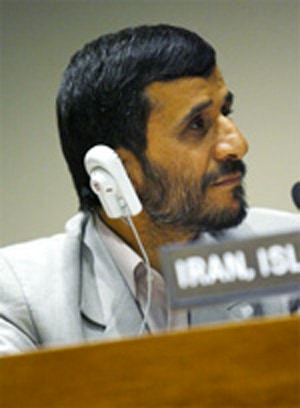MILESTONES: IRAN
By Michael Shari
The collapse of Iran’s currency, the rial, has cut so deeply into the credibility of Iran’s government that it’s inching closer to regime change than it has been since a popular uprising deposed shah Mohammad Reza Pahlavi in 1979, say Iran watchers.
 |
|
Ahmadinejad misjudged domestic sentiment on rial fall |
Now, they say, it can no longer be taken for granted that the hardline Islamic regime will stay in power through the New Year.
President Mahmoud Ahmadinejad’s current troubles began five years ago with US-led sanctions that targeted Iran’s oil exports in a still-unsuccessful attempt to force him to abandon a nuclear weapons program. “The tipping point came late last year, with announcements on the part of the US as well as Britain that sanctions would be imposed on the Iranian central bank in the sense of isolating the country’s banking system,” says Suzanne Maloney, a senior fellow who focuses on Iran at the Brookings Institute in Washington. Now the only businesses that can legally spend the rial, Iran’s currency, are in Iran, but they can no longer import or export goods.
The cash-strapped government was also forced to eliminate subsidies on food and fuel that had been the bedrock of its popularity. But Ahmadinejad miscalculated badly last summer when, despite warnings from economists, he distributed cash payments to the poorest of the poor, who were deemed most likely to revolt. Instead, they converted their rials into dollars and euros, which drove the rial down, and bought food, which drove prices up. The rial has lost a reported 80% of its value since the end of 2011, and in October reached an all-time low against the US dollar.
Iran watchers are skeptical that Ahmadinejad can still muster the credibility that allowed him to crush election protests in 2009—let alone stave off sanctions or resurrect the rial. “The government will have to act quickly, or it will lose its authority [in] a slow erosion process [in which] the majority of the people move from one side to the other,” says Gary Sick, a senior research scholar at Columbia University’s Middle East Institute. “This, to some degree, is what happened to the shah.”



